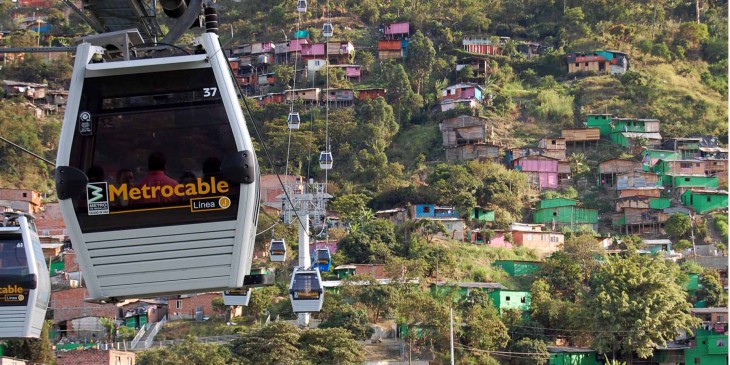Cities infrastructures are networks, functional networks that allow the connected buildings to make optimal use of their design. A building could stand alone, but if separated from the city infrastructure, it becomes more like a sculptural object., it would segregate its inhabitants from the rest of the city and produce exclusion in social and economical terms. Separating mobility from transit and expectations and incentives from people is a problem of the same essence, it is like ignoring a certain potential that if integrated in the “living organism” that the city is could be a source of richness.
Medellin, in Colombia is a good example of a successful attempt to reconnect to the city an area that was completely separated, not only in terms of transportation but also socially and economically. This intervention of adding metrocables to link this area to the city,had many positive impacts on both of the city and on this specific area, one among many was the fact that it encouraged people living there to find a job in the city since it became much easier to get there, it thus reduced the deliquescence, drug dealing,etc..
In people’s mind, the developers tend to consider only one kind of capital, and it is the one related to money, there is a general belief that developers are not interested by the human, social or natural capital. And this is maybe due to the fact that until very recently, those different capitals were not really integrated in the economic system.
We are just starting to notice how more and more, with the increase of environmental and social awareness, some new values start to be implemented in the market, and different developers, and companies attempt to make use of these values.
Philips company has dedicated a full research team on a microbial house concept. It is very clear that more and more, thanks to environmental awareness, people are starting to give nature and environment enough values for the market to take them into consideration.


